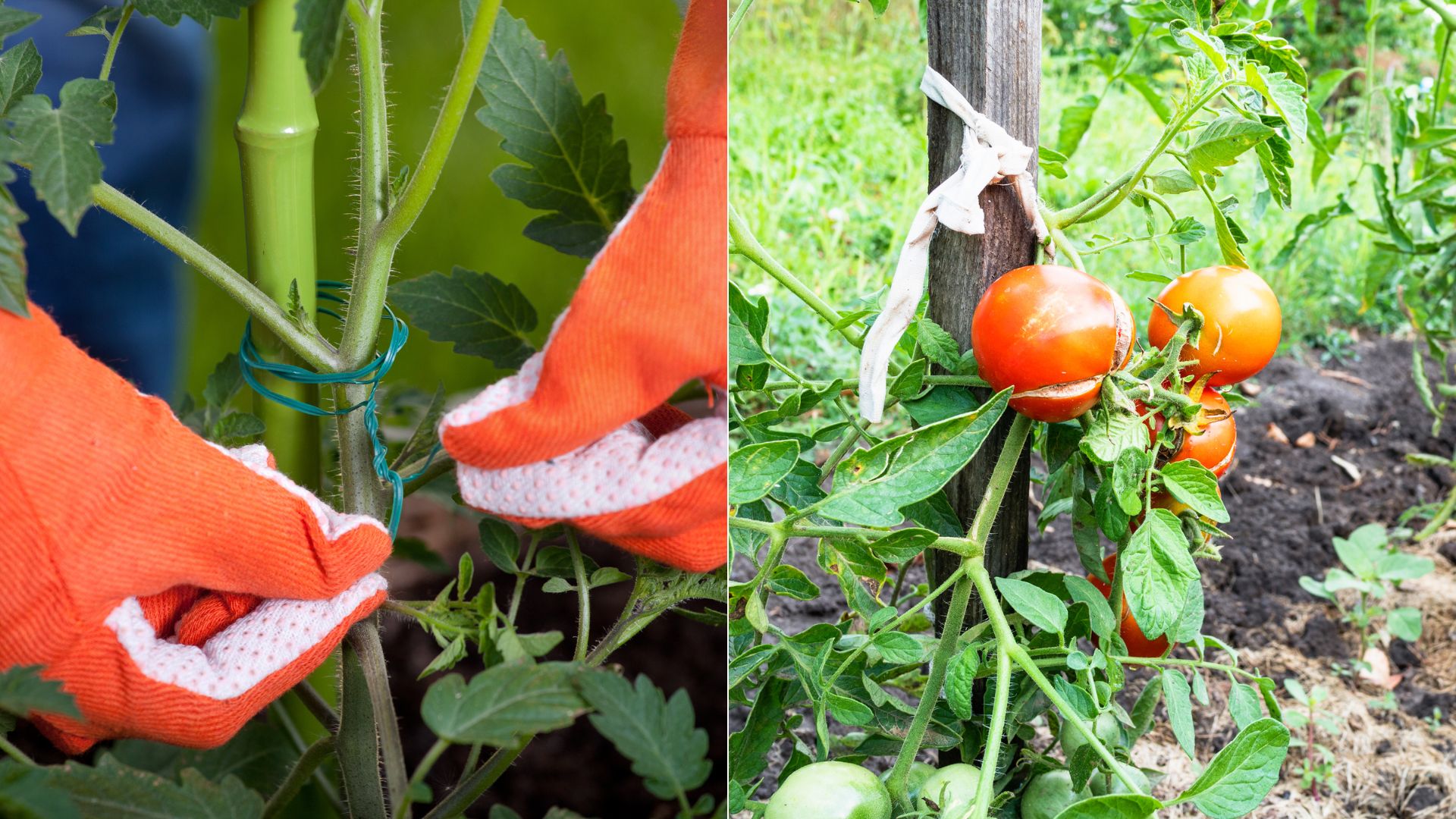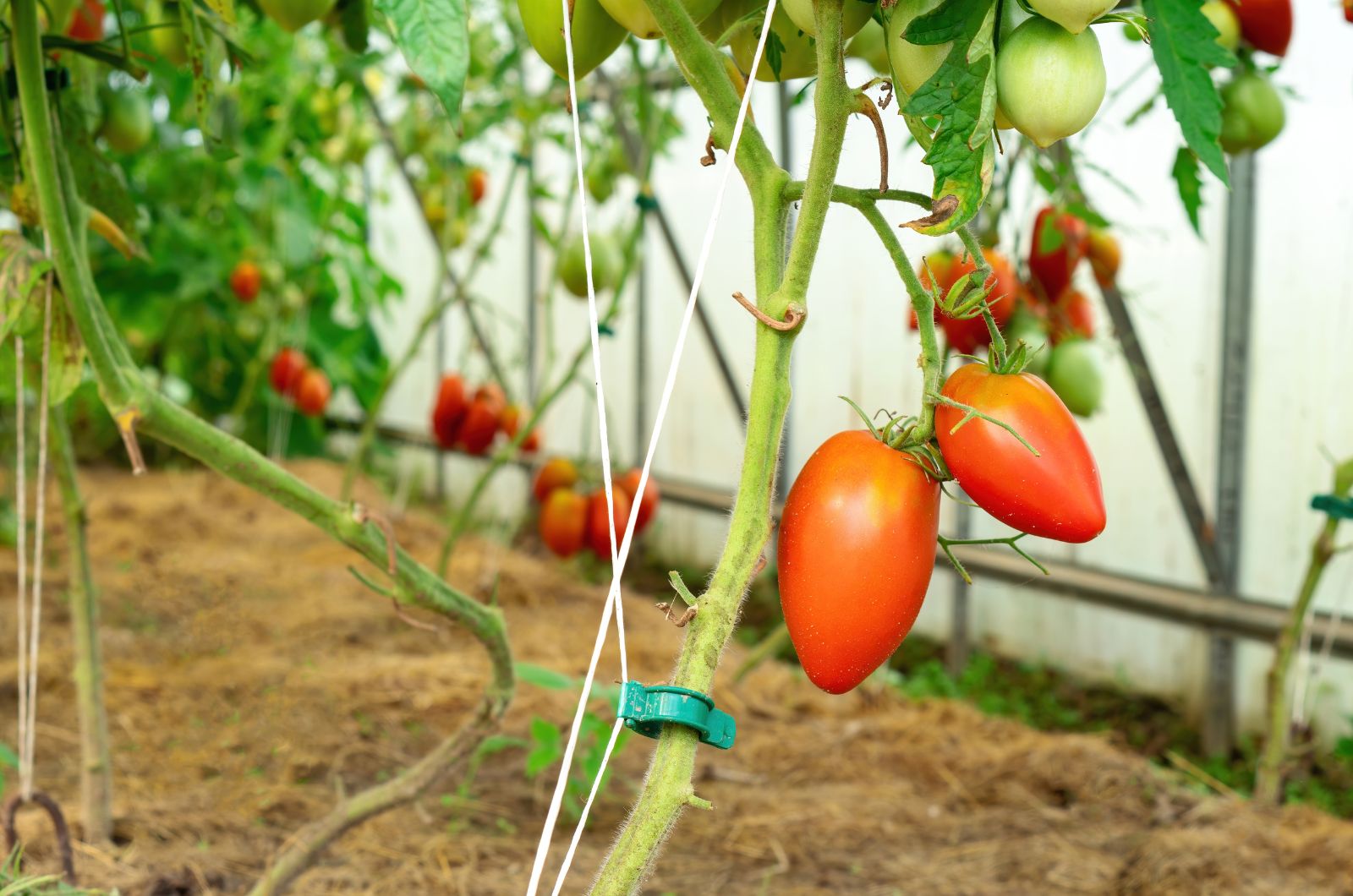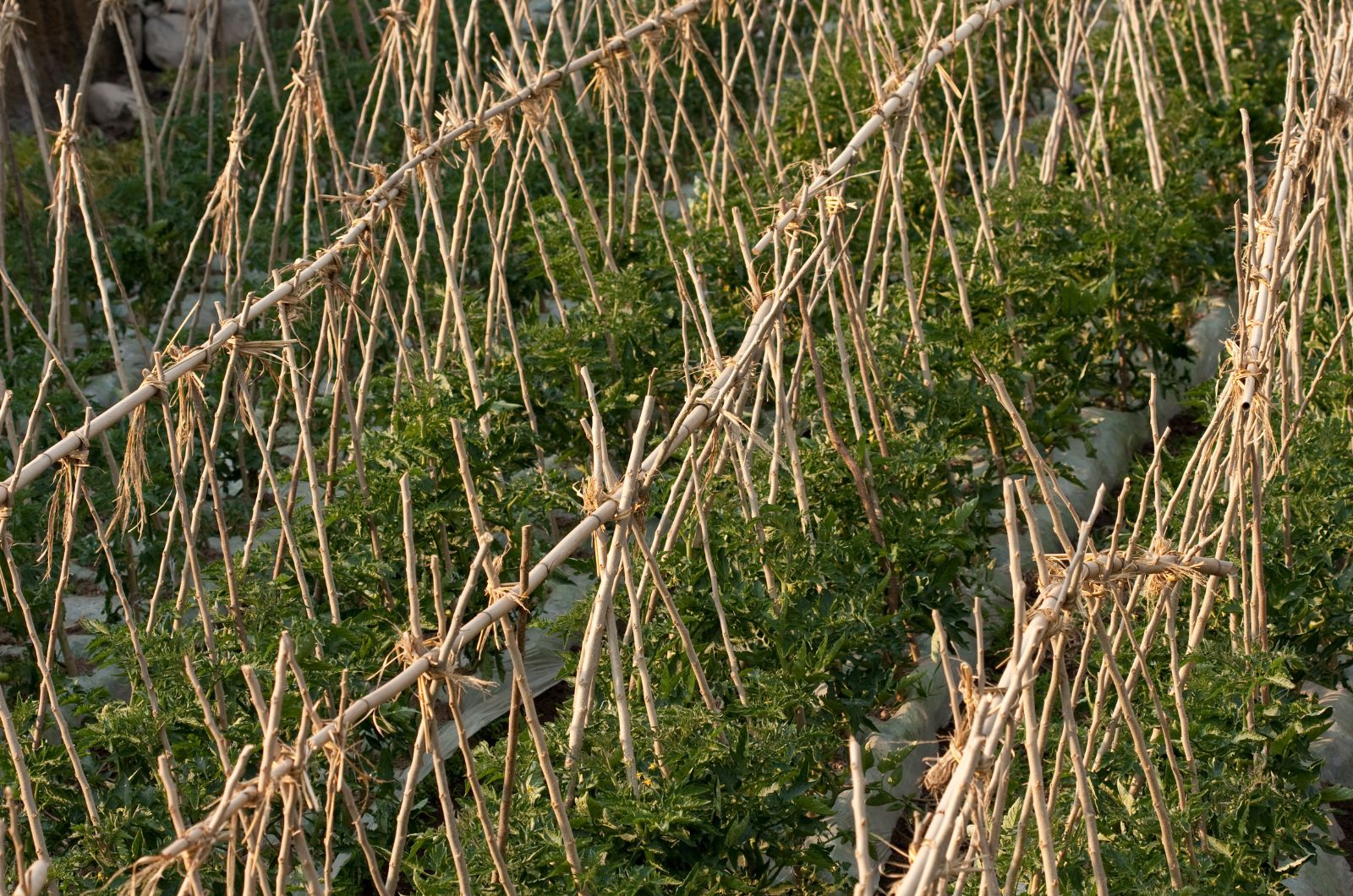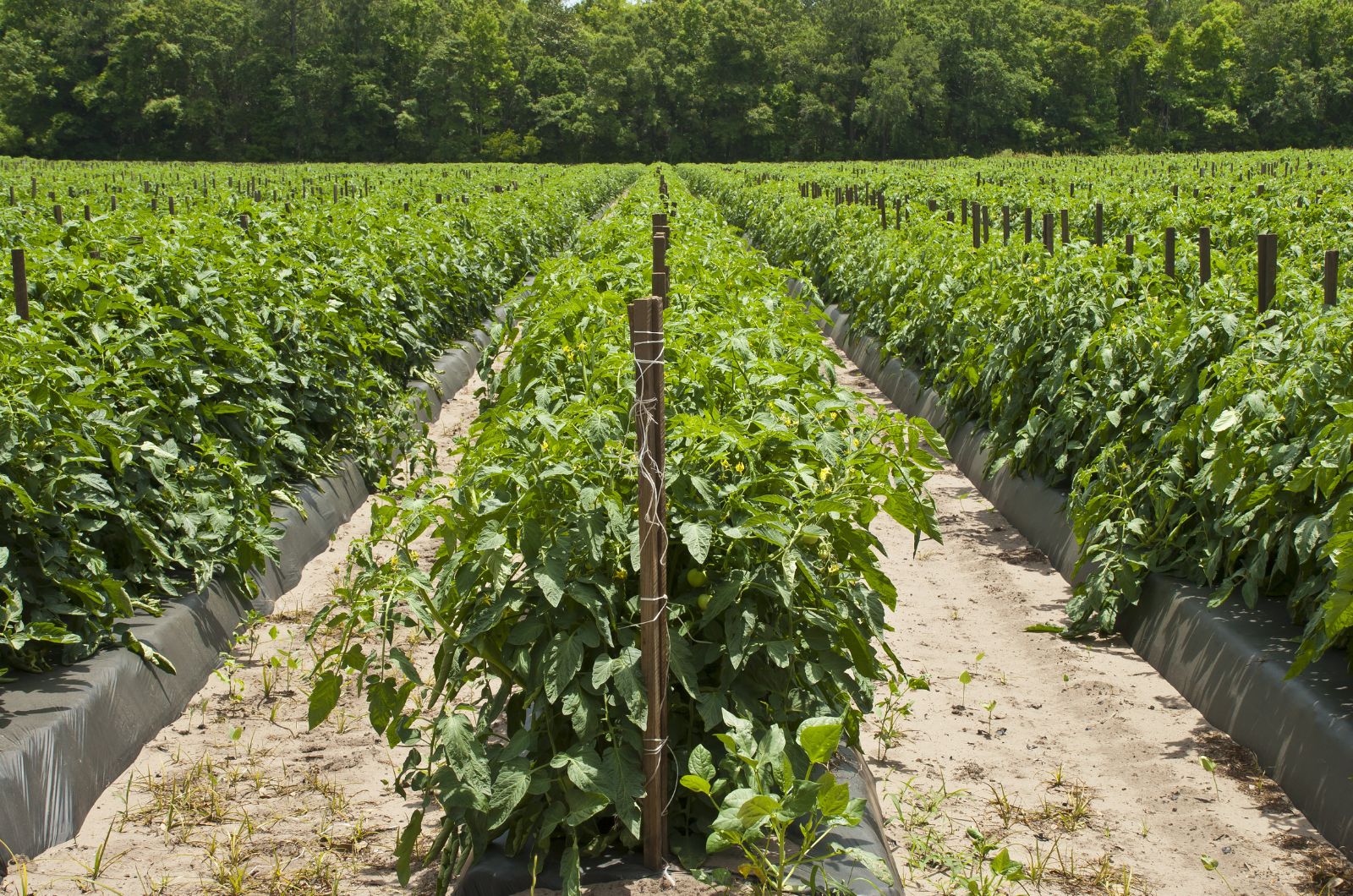Nothing beats the feeling of picking the first ripe tomato you grew yourself.
But if you’re not staking your plants diligently, your harvest will be average at best.
Smaller harvest, susceptibility to fungal diseases, and underdeveloped tomato plants are all caused by a lack of a sturdy trellis.
So let’s learn how to avoid these issues and stake tomatoes the right way!
Why Stake Tomato Plants?
There are two main varieties of tomatoes, determinate and indeterminate, and they both benefit from staking.
Determinate tomatoes get about 5 feet tall and produce their fruit over the course of a two-week period, after which the plant dies away.
Indeterminate ones keep producing delicious tomatoes until the frost kills them and can grow up to 10 feet tall if you let them. They are much more prone to sprawling and need a trellis to grow upwards and develop properly.
Non-staked tomatoes are more prone to fungal diseases caused by constantly touching the moist ground. And plants affected by disease are more susceptible to pest attacks.
Additionally, if you don’t stake tomatoes or you do it incorrectly, the stems heavy with fruit will break, reducing your harvest – especially when it comes to indeterminate varieties.
Therefore, if you want to get more tomatoes, you should stake the plants.
Staking tomatoes also makes them easier to prune and harvest and it reduces the amount of space these, clearly, huge plants can take.
When To Trellis
In theory, you can stake your tomatoes whenever you want. But there is a best time you should do it!
The wisest method is to provide your tomatoes with a sturdy support as soon as you transplant them into the ground.
This will allow them to grow up the stake and limit the amount of space they take. It will also keep the plants’ roots safe because you won’t insert anything into the soil and risk damaging them.
How To Stake Them
There are many ways you can provide support to your tomatoes, but staking and caging are the most common ones.
Staking
Staking tomatoes is cheaper than caging them, but it can be more labor-intensive and time-consuming.
But, it is necessary when growing indeterminate tomatoes that easily overgrow short cages.
Step 1. Choose wooden posts and T-posts to grow your indeterminate tomatoes. Make sure they’re tall enough to support the mature tomatoes and their size.
Step 2. Place them into the ground and hammer them until you feel they’re sturdy enough. Space them about 5-6 inches away from the plant you wish to stake.
Step 3. Tie the main stem of the tomato to the stake, tying it every 6-8 inches as you go upwards.
Step 4. Keep tying the stem every 6-8 inches as the plant develops and puts on more height.
Caging
Tomato cages aren’t called that for no reason. They’re one of the most common methods of trellising tomatoes and are perfect for determinate varieties that don’t grow larger than 4-5 feet.
Step 1. Buy a cage for every tomato plant you want to grow and make sure it’s no shorter than 5 feet and at least 1-2.5 feet wide.
Step 2. Place the cage over your plant and push it into the ground until you feel it’s sturdy and won’t tip over. Repeat this for all the tomatoes you have.
Step 3. Attach the tomato stems and branches to the cages to promote upward growth. You can use twine, zip ties – anything you have.
Pro tip: If the plant becomes too heavy for the cage and you see it tipping over, you can use some stakes to support its weight. Place them into the ground on the opposite side of the cage and fasten them with wire to make the structure more secure.
Other Methods Of Trellising Tomatoes
The two methods I just mentioned aren’t the only ones you can use to support your tomatoes.
If you have an enormous garden filled with tomato plants, you can try the Florida weave method. It includes rows of stakes connected with tensed twine weaved at different heights, which support the tomato plants as they grow.
Here’s how to set it up:
You can also try the double staking method. It is almost the same as single staking; you just need two stakes instead of one. It is perfect for heavier varieties, such as slicer tomatoes, which break if they’re not supported properly.




